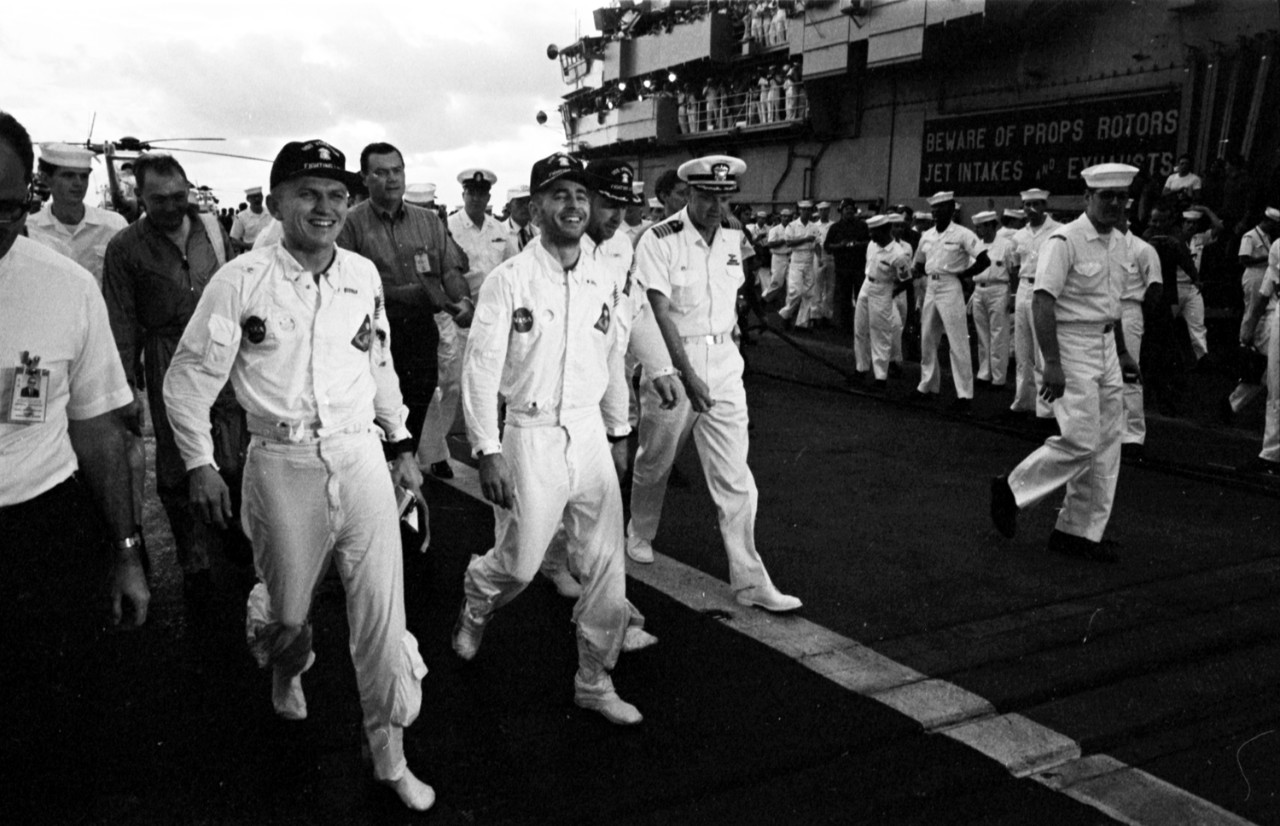Apollo 8 Mission
Apollo 8 launched on 21 December 1968. Captain James A. Lovell Jr., USN, was command module pilot. This was the first mission to take humans to the vicinity of the moon. The mission lasted 6 days and 3 hours and included 10 moon orbits. Recovery was by HS-4 helicopters from USS Yorktown (CVS-10).
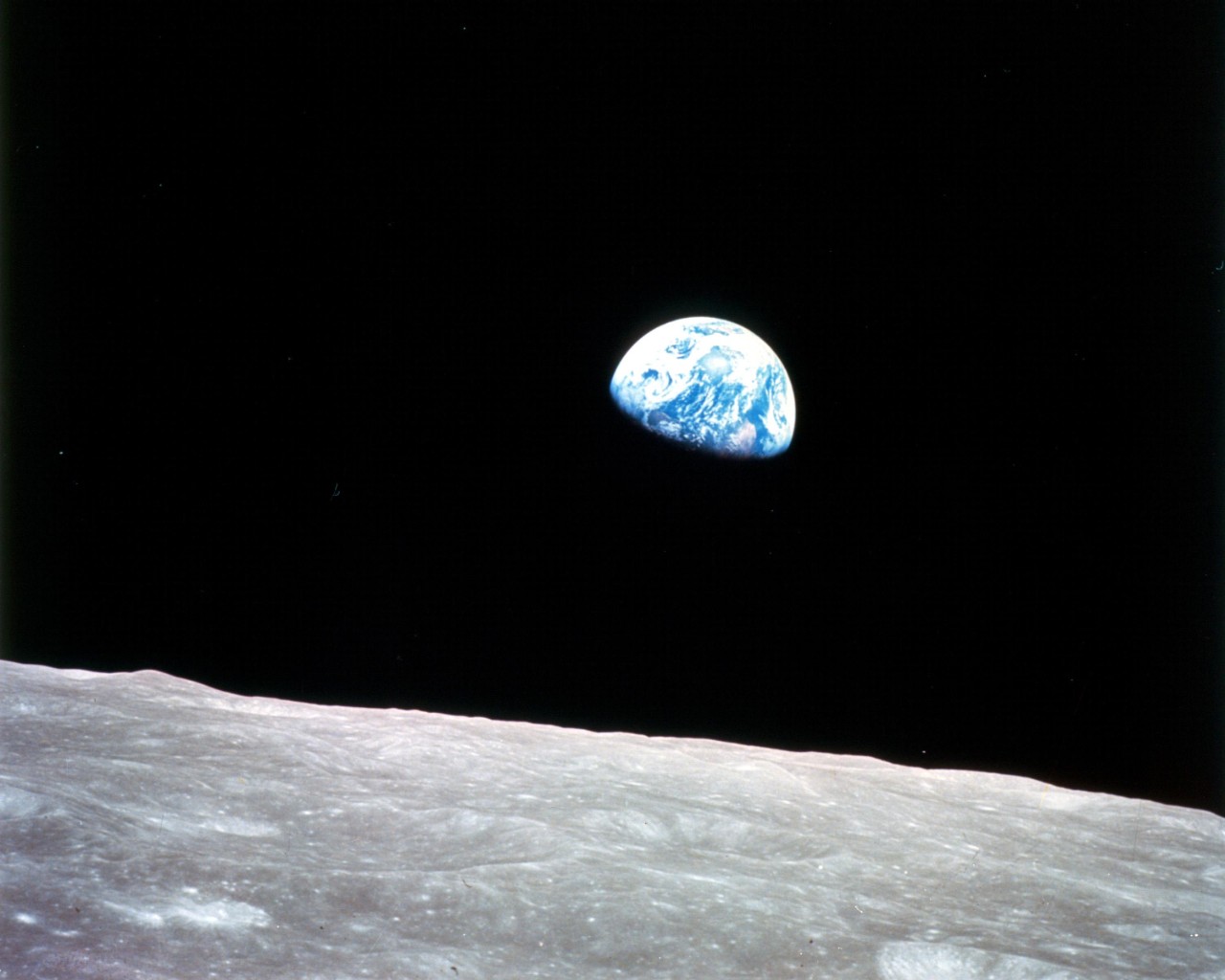
Apollo 8, the first manned mission to the moon, entered lunar orbit on Christmas Eve, 24 December 1968. That evening, the astronauts—Commander Frank Borman, Command Module Pilot Jim Lovell, and Lunar Module Pilot William Anders—held a live broadcast from lunar orbit, in which they showed pictures of the Earth and moon as seen from their spacecraft. Said Lovell, “The vast loneliness is awe inspiring and it makes you realize just what you have back there on Earth.” They ended the broadcast with the crew taking turns reading from the book of Genesis. (Image Credit: NASA)
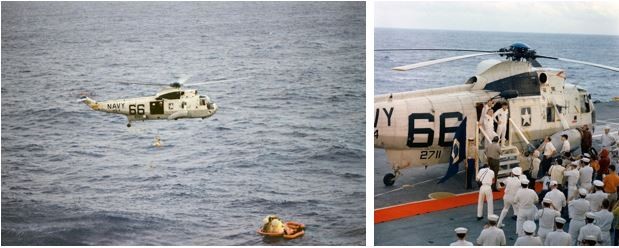
Left: Apollo 8 capsule floating in the Pacific Ocean after splashdown, with one of the crewmembers being hoisted aboard the recovery helicopter. Right: Apollo 8 astronauts step off the recovery helicopter onto the deck of USS Yorktown. (Image Credits: NASA)
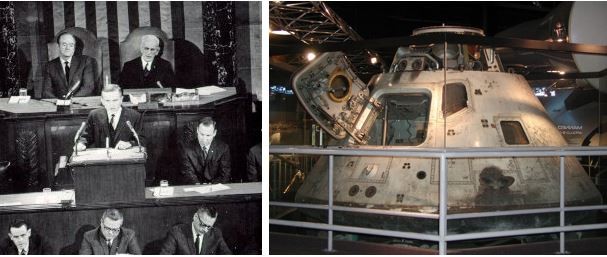
Left: Apollo 8 Commander Frank Borman addresses a joint session of Congress. Right: Apollo 8 Command Module at the Chicago Museum of Science and Industry. (Image Credit: Chicago Museum of Science and Industry)
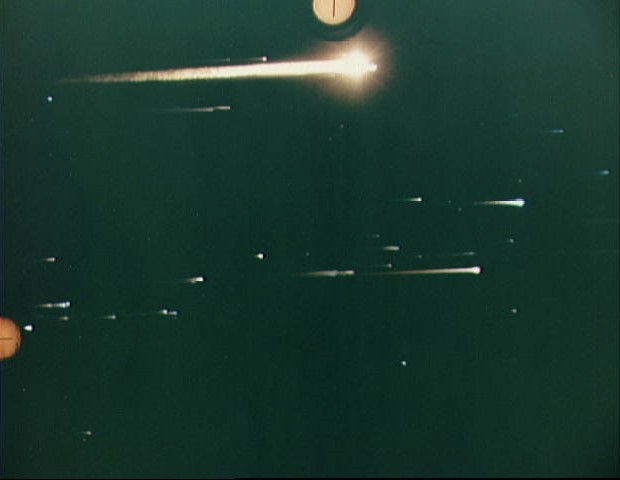
This Apollo 8 reentry photograph was taken by U.S. Air Force ALOTS (Airborne Lightweight Optical Tracking System) camera mounted on a KC-135-A aircraft flown at 40,000 ft. altitude. Apollo 8 splashed down at 10:15 a.m., 27 December 1968, in the central Pacific approximately 1,000 miles south-southwest of Hawaii. (NASA Photo ID: S69-15592)
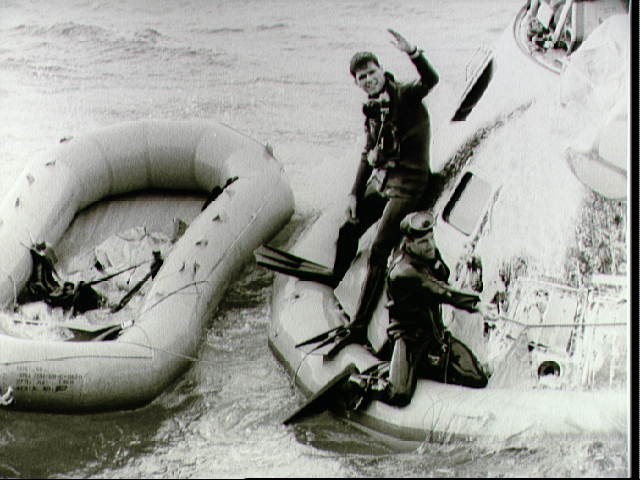
A U.S. Navy frogman team participates in the Apollo 8 recovery operations. (NASA Photo ID: S69-15732)
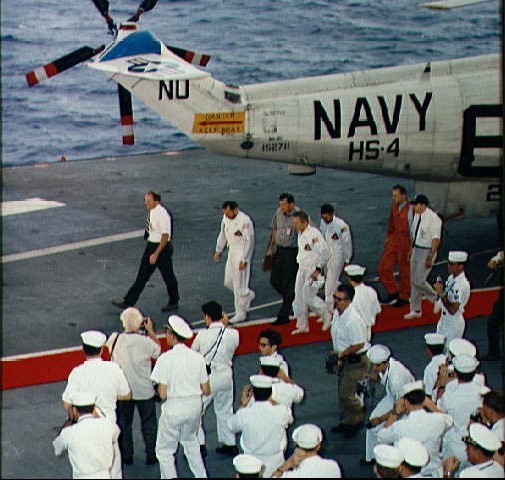
The Apollo 8 crew walks along Yorktown’s deck to ceremony greeting them on their return from their lunar orbit mission. (NASA Photo ID: S68-56328).

